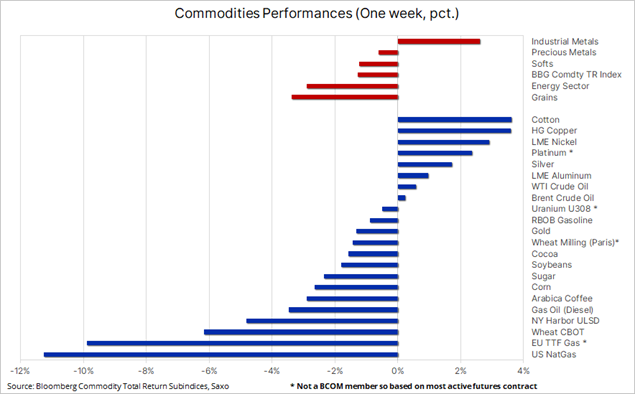Could the upturn in inflation trigger renewed interest in gold?
By Arnaud du Plessis, manager of specialised thematic equity strategies in gold and commodities, and with Thomas Page-Lecuyer, senior investment specialist at CPR AM
Reams have been written on the link between inflation and gold, especially against a backdrop of reflation and key rate hikes. Thousands of studies have found that gold offers protection from an acceleration in consumer prices, nominal rate trajectories, and real interest rates, thus suggesting a close and proven correlation between these factors. But is this a real issue at a time when the US Federal Reserve is taking the punch bowl away, and accommodative monetary policy is giving way to more restrictive models?
Historically, this has been true – gold prices fall when real interest rates rise, and vice versa. The relationship has played out many times over the long term, despite occasional deviations. And this makes perfect sense, as the lower real rates reflects lower interest in bonds. Even non-yielding gold then becomes attractive. The opposite is true. And often times the inflation rate is the first trigger, as real rates are calculated by subtracting inflation from the nominal interest rate. Rising consumer prices thus exert so much pressure on real rates that nominal rates remain unchanged. The calculation method is therefore confirmed, along with the correlation that has been proven over the past decades.
The economist John Exter has endeavoured to demonstrate this with his inverted pyramid, proving that gold remains the most reliable and liquid asset during periods of deflationary crises, unlike less liquid assets, such as real estate and derivatives. He also proves that the price of a gold asset outperforms prices of other assets during periods of strong inflation. So gold is the right investment for both too low and too high inflation. This makes sense in theory – real rates rise when consumer prices rise (in which case, gold becomes highly attractive) but nominal rates must not be left out of the equation. Indeed, all this works as long as these rates are stable, and this is not always the case.
Nominal interest rates tend to adjust to inflation expectations, in which case the speed of the adjustment of nominal rates to inflation has a role to play. When an improvement is expected in the economy nominal rates tend to rise and real rates, too. They both tend to decline in phases of accommodative monetary policy. Accordingly, gold prices tend to fall when the macroeconomic outlook improves and to rise when monetary policy is eased. Once again, there is a historical correlation between two assets. But what about the adjustment in interest rates, which creates fluctuations in gold or the emergence of systematic risks followed by a period of relaxation?
Indeed, let’s not overlook the most important factor – gold must not be regarded as a traditional investment, as just any asset class. It is an unproductive, non-yielding asset, whose purpose is not to create wealth, but to maintain it. Its secondary role is diversification, in reducing a portfolio’s overall risk by counterbalancing the risk incurred by other assets, as gold’s decorrelation vs. other assets makes it highly diversifying. Its value as a safe haven comes into play as soon as a systemic risk emerges, in the event of political or geopolitical uncertainties. An investment in gold is not meant for short-term gains but, rather, long-term protection. In a word, it’s insurance. So it is worth asking what actually triggers fluctuations in the gold price.
This is all the truer as we have seen some market aberrations recently. If gold is a pro-inflation investment and bonds are a pro-deflation investment, there is no reason for them to fluctuate in the same direction for any period of time. But since 2016, this has often been the case. This proves that inflation is not gold’s only, or even main, triggering factor.




